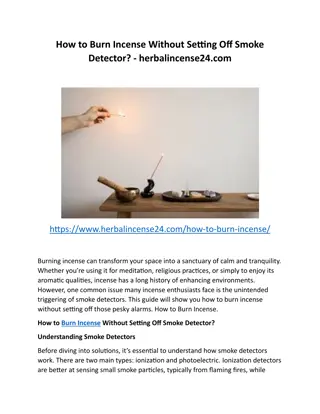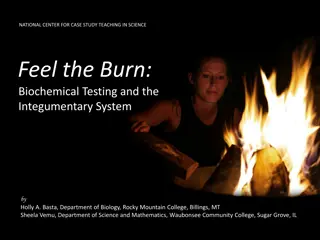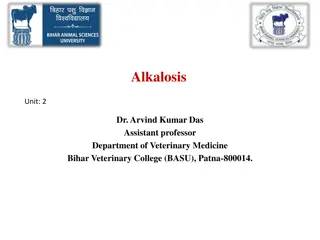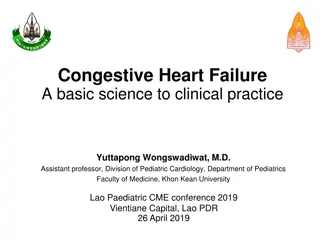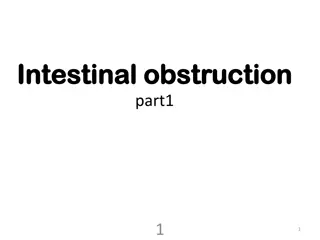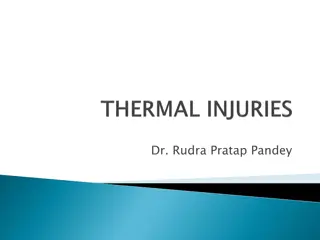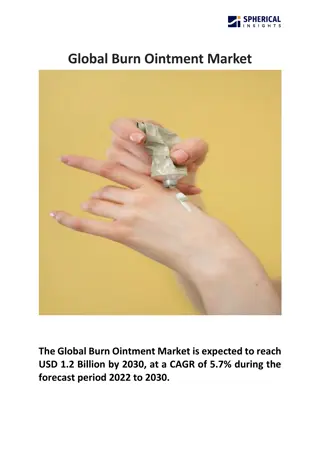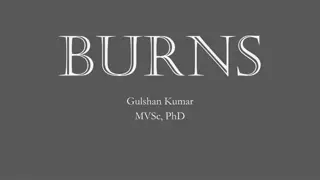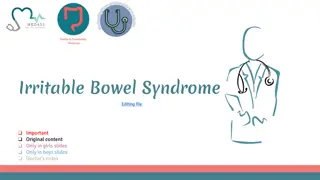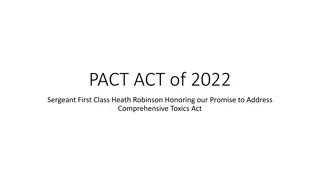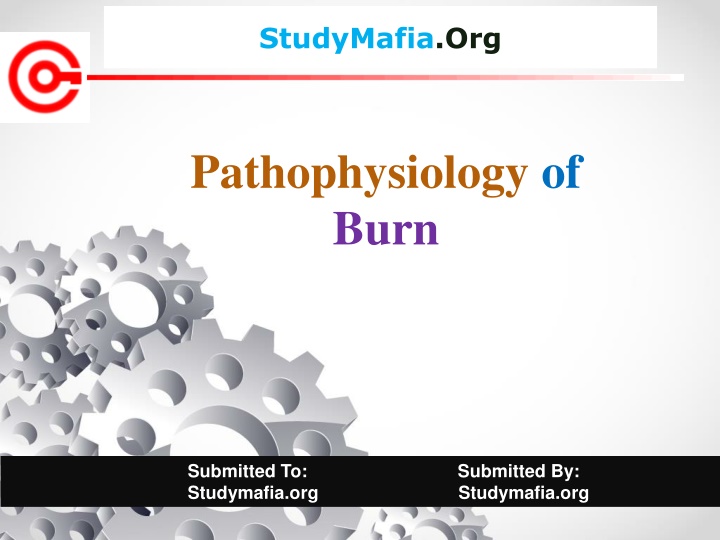
Pathophysiology of Burns: Types, Effects, and Prevention
An in-depth exploration of the pathophysiology of burns, including definitions, types such as electrical, thermal, chemical, and radiation burns, their effects, prevention strategies, and the global impact of burn injuries on public health. Learn about the causes, symptoms, and treatment options associated with burn injuries.
Download Presentation

Please find below an Image/Link to download the presentation.
The content on the website is provided AS IS for your information and personal use only. It may not be sold, licensed, or shared on other websites without obtaining consent from the author. If you encounter any issues during the download, it is possible that the publisher has removed the file from their server.
You are allowed to download the files provided on this website for personal or commercial use, subject to the condition that they are used lawfully. All files are the property of their respective owners.
The content on the website is provided AS IS for your information and personal use only. It may not be sold, licensed, or shared on other websites without obtaining consent from the author.
E N D
Presentation Transcript
StudyMafia.Org Pathophysiology of Burn Submitted To: Submitted By: Studymafia.org Studymafia.org
Table Contents Definition Introduction Types of burn Pathophysiology of Burn Effect of Burn Prevention of Burn Conclusion 2
Definition A burn is an injury to the skin or other organic tissue primarily caused by exposure to heat or other causative agents (radiation, electricity, chemicals). 3
Introduction According to WHO, it is a global public health problem, accounting for an estimated 180,000 deaths annually. It is among the leading causes of disability in low and middle-income countries and almost two-thirds occur in the WHO African and South-East Asia regions. Burns do not only affect the skin, they can have other effects on the tissue, organ and system networks such as smoke inhalation, as well as psychological effects. 4
Types of Burns Electrical Burn Electrical burn injury is caused by heat that is generated when the electrical energy passes through the body causing deep tissue injury. The magnitude of the injury depends on the pathway of the current, the resistance of the current flow through the tissues, the strength, and the duration of the current flow. 6
Types of Burns Thermal Burn Thermal burn injuries are caused by external heat sources (hot or cold), scalds (hot liquids), as a result of energy transfer, hot solid objects, steam and cold objects. 7
Types of Burns Chemical Burn A chemical burn injury is caused by tissue contact with chemical agents such as strong acids, alkaline, or organic compounds. Chemical agents depending on the duration of exposure and the nature of the agent have different effects on the skin. 8
Types of Burns Radiation Burn Radiation burn is damage to the skin or other biological tissue and organs due to prolonged exposure to radiation. It is the least common burn injury and the most common type of radiation burn is the sunburn caused by prolonged exposure to Ultraviolet rays (UV). 9
Pathophysiology of Burns Local Effect Zone of coagulation: This occurs at the point of maximum damage and this zone is characterised by irreversible tissue damage due to coagulation of the constituent proteins that occurs as a result of the insult. Zone of stasis or zone of ischemia: This zone lies adjacent to the zone of coagulation and it is subject to a moderate degree of damage associated with vascular leakage. 10
Pathophysiology of Burns Zone of hyperemia: This is the outermost zone. It is characterised by the eased blood supply and inflammatory vasodilation. The tissue here will recover unless there is severe sepsis or prolong hypoperfusion. 11
Effect of Burn Effect on the Cardiovascular System The initial response to a severe burn injury is characterised by hypovolemia and reduced venous return. This concomitantly leads to a decrease in cardiac output, increased heart rate, and peripheral resistance. 12
Effect of Burn Effect on the Renal System The renal system is affected following alterations in the cardiovascular system. Renal blood flow and glomerular filtration rate are reduced secondary to hypovolemia, diminished cardiac output, and the effects of angiotensin, vasopressin and aldosterone. 13
Effect of Burn Effect on the Liver There is substantial depletion of the hepatic proteins, alterations in serum levels of triglycerides and free fatty acids are highlighted, both of which are significantly increased secondary to a decrease in fat transporter proteins rendering the liver susceptible for fatty infiltration. 14
Effect of Burn Effects on Gastrointestinal System/Metabolism The basal metabolic rate increases up to three times its original rate. This coupled with splanchnic hypoperfusion, necessitates early and aggressive enteral feeding to decrease catabolism and maintain gut integrity. 15
Effect of Burn Effect on the Endocrine System The stress hormones i.e. catecholamine, glucagon and cortisol among other hormones are actively involved at the onset of burns injuries. These hormones display an exponential increase in their levels; sometimes reaching 10 fold their normal values. 16
Prevention of Burns Enclose fires and limit the height of open flames in domestic environments. Promote safer cookstoves and less hazardous fuels, and educate regarding loose clothing. Apply safety regulations to housing designs and materials, and encourage home inspections. Improve the design of cookstoves, particularly about stability and prevention of access by children. 17
Prevention of Burns Lower the temperature in hot water taps. Promote fire safety education and the use of smoke detectors, fire sprinklers, and fire- escape systems in homes. Promote the introduction of and compliance with industrial safety regulations, and the use of fire-retardant fabrics for children s sleepwear. 18
Prevention of Burns Avoid smoking in bed and encourage the use of child-resistant lighters. Promote legislation mandating the production of fire-safe cigarettes. Improve the treatment of epilepsy, particularly in developing countries. Support the development and distribution of fire-retardant aprons to be used while cooking around an open flame or kerosene stove. 19
Conclusion Burns injuries have physical, socio-economic, and psychological effects especially in cases of severe burns injuries. They impact not only the affected part of the body, but also the organs and systems of the body. They require an early and prompt response to reduce the effect of an injury. 20
References Google.com Wikipedia.org Studymafia.org Slidespanda.com
Thanks To StudyMafia.org


